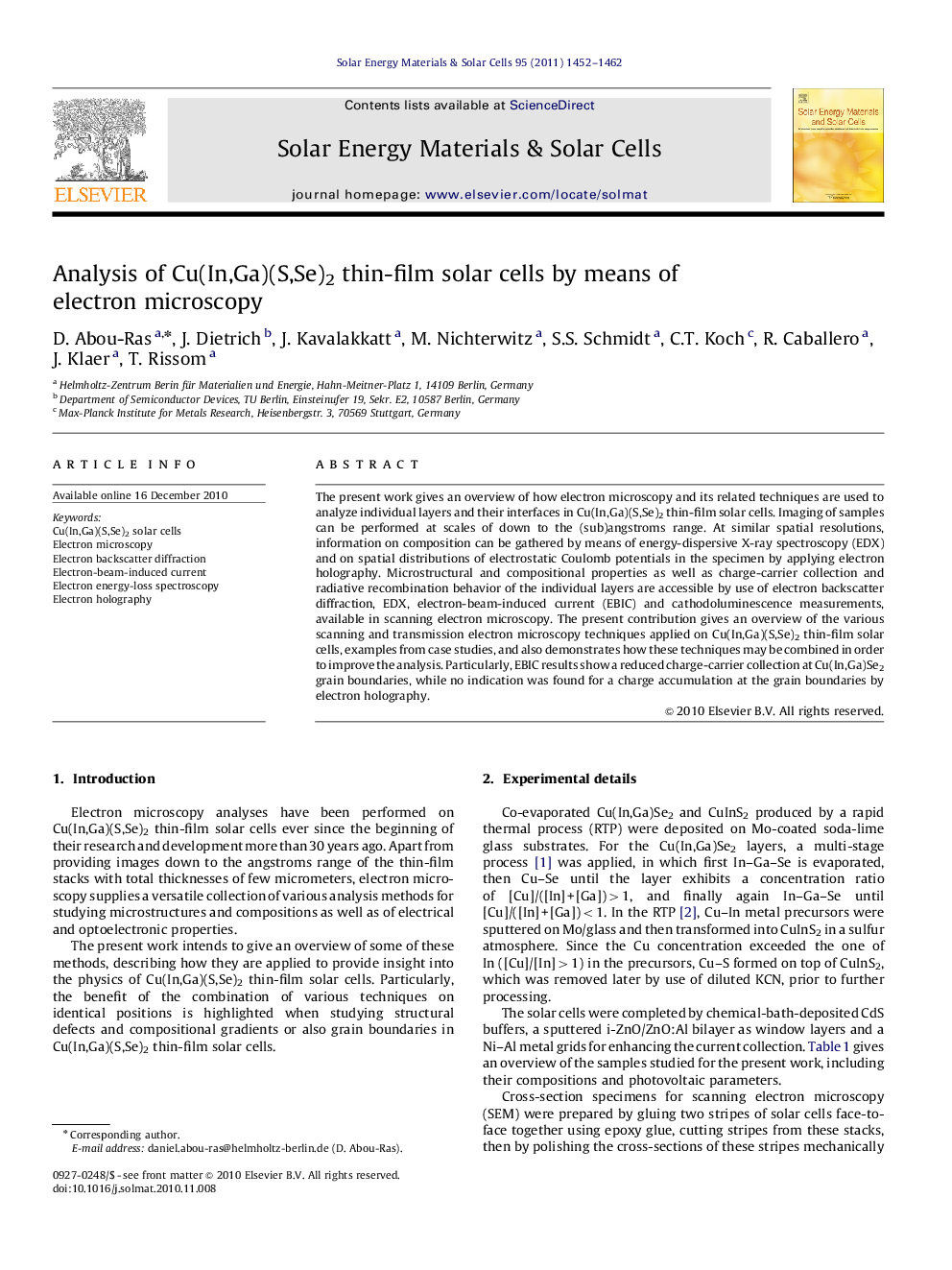| Article ID | Journal | Published Year | Pages | File Type |
|---|---|---|---|---|
| 79422 | Solar Energy Materials and Solar Cells | 2011 | 11 Pages |
The present work gives an overview of how electron microscopy and its related techniques are used to analyze individual layers and their interfaces in Cu(In,Ga)(S,Se)2 thin-film solar cells. Imaging of samples can be performed at scales of down to the (sub)angstroms range. At similar spatial resolutions, information on composition can be gathered by means of energy-dispersive X-ray spectroscopy (EDX) and on spatial distributions of electrostatic Coulomb potentials in the specimen by applying electron holography. Microstructural and compositional properties as well as charge-carrier collection and radiative recombination behavior of the individual layers are accessible by use of electron backscatter diffraction, EDX, electron-beam-induced current (EBIC) and cathodoluminescence measurements, available in scanning electron microscopy. The present contribution gives an overview of the various scanning and transmission electron microscopy techniques applied on Cu(In,Ga)(S,Se)2 thin-film solar cells, examples from case studies, and also demonstrates how these techniques may be combined in order to improve the analysis. Particularly, EBIC results show a reduced charge-carrier collection at Cu(In,Ga)Se2 grain boundaries, while no indication was found for a charge accumulation at the grain boundaries by electron holography.
